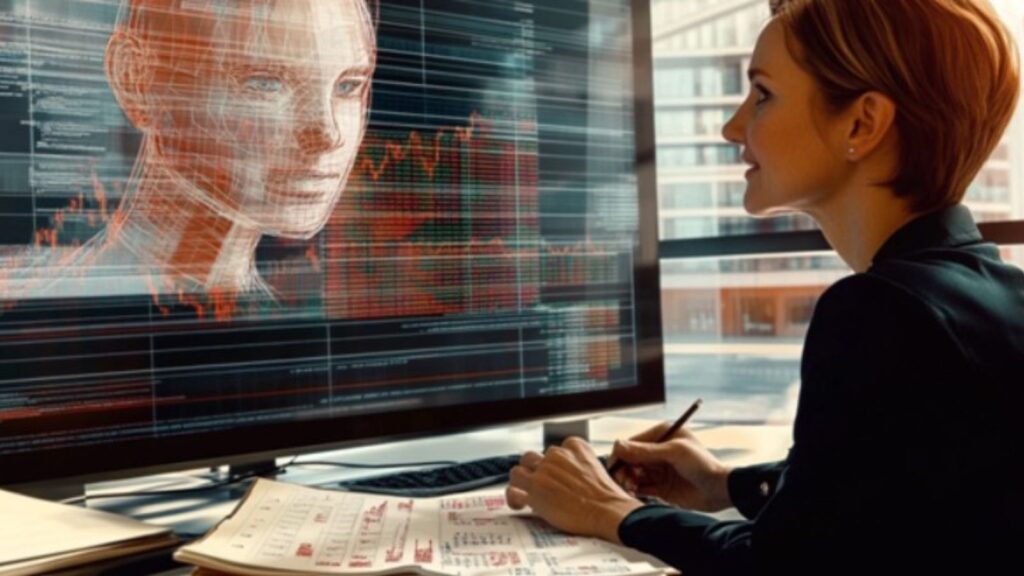Financial markets generate over $94 trillion in daily transaction volume across global exchanges, with 73% of trading volume now executed algorithmically. Automated systems process market data in microseconds while maintaining consistent execution parameters regardless of market conditions. Institutional traders deploy sophisticated algorithms handling complex multi-variable decisions, while retail investors increasingly adopt accessible automation. The modern bot trader combines computational power with strategic programming, executing precise orders 24/7 without emotional interference or attention limitations.
The Rise Of Ai In Trading Markets
Artificial intelligence has transformed from a futuristic concept to an essential component of modern trading operations. Market projections indicate explosive growth, with the global AI market expected to surpass $1.8 trillion by 2030. This rapid expansion reflects the increasing adoption of automated systems across financial sectors.
Currently, AI excels in specific trading-related tasks, particularly data processing, pattern recognition, and transaction execution. Major financial institutions have integrated AI-powered systems to streamline customer services and reduce operational costs. In analytics, AI systems efficiently process vast amounts of market data, news reports, corporate events, and other financial information—tasks that previously required significant effort from human analysts.
Despite these advances, we remain several years away from achieving Artificial General Intelligence (AGI)—AI systems capable of reasoning like humans. Most experts estimate this level of technology is at least five to seven years from realization. Until then, human intelligence remains an irreplaceable element in trading operations, particularly for strategic thinking, creativity, and intuitive market assessment.
How Trading Bots Think
Trading bots operate through sophisticated algorithms designed to analyze market conditions and execute trades based on predetermined parameters. Unlike humans, these systems process information through pure mathematical analysis, free from emotional influences or cognitive biases.
The computational approach of trading bots enables them to simultaneously analyze multiple data points—price movements, volume changes, technical indicators, and sometimes even sentiment analysis from news sources. This multi-factorial analysis happens in milliseconds, allowing for decision-making speeds impossible for human traders.
Pattern recognition forms the foundation of most trading bot strategies. By analyzing historical data, these systems identify recurring patterns and calculate statistical probabilities for future price movements. While this approach works effectively in stable or cyclical markets, it fundamentally assumes that past patterns will continue into the future—an assumption that doesn’t always hold true in unpredictable market conditions.

The Human Edge: Psychological Aspects Of Trading
Human traders bring unique psychological capabilities to financial markets that current AI systems cannot replicate. The human mind excels at intuitive leaps—connecting seemingly unrelated information into novel insights. This intuition often stems from years of market experience, allowing seasoned traders to sense subtle shifts in market sentiment before they manifest in price movements.
“Trading is a battlefield of rival parties constantly waging war over greater profits, which is why intuition and creativity are so important. That’s why final decision-making that truly drives success will remain in human hands for years to come.”
When unprecedented events occur—such as unexpected geopolitical developments or economic policy shifts—human traders can quickly adapt their strategies, leveraging creativity and lateral thinking. This adaptability proves particularly valuable during market anomalies or crises when historical patterns break down.
Human judgment also incorporates contextual understanding—recognizing the significance of market developments within broader economic, social, and political frameworks. This holistic perspective allows human traders to make more nuanced assessments of complex situations, particularly when evaluating the potential impacts of fundamental changes in market conditions.
Where Bots Excel And Humans Falter
Trading bots demonstrate clear advantages in several critical areas where human capabilities often fall short. Their round-the-clock operation ensures no opportunities are missed, regardless of time zones or market hours. This continuous vigilance proves especially valuable in global markets and 24/7 trading environments like cryptocurrency exchanges.
The emotionless decision-making of automated systems prevents many psychological pitfalls that plague human traders. Bots never experience fear, greed, or decision fatigue, allowing them to maintain consistent execution of trading strategies without deviation.
Speed represents perhaps the most significant advantage of trading bots. In high-frequency trading scenarios, bots execute transactions in milliseconds—a timeframe impossible for human reaction. This rapid execution becomes crucial in volatile markets where prices fluctuate dramatically in short periods.
- Unwavering discipline and strategy adherence
- Ability to simultaneously monitor multiple markets
- Freedom from emotional decision-making
- Superior processing of numerical data and statistics
- Consistent execution regardless of market conditions
These advantages make bots particularly effective for specific trading approaches, especially those requiring precise timing, strict rule adherence, and rapid analysis of quantitative data.
Where Humans Excel And Bots Falter
Despite technological advances, human traders maintain distinct advantages in several crucial areas of market operation. When faced with unprecedented situations—like the market impacts of a global pandemic or major political upheaval—human traders can adapt strategies based on creative thinking and contextual understanding. Bots, constrained by their programming, continue following established patterns even when those patterns no longer apply.
Humans excel at interpreting qualitative information, including subtle market sentiment shifts, corporate leadership changes, or emerging economic trends. This nuanced understanding enables traders to anticipate market movements before they manifest in the numerical data that bots rely upon.
The flexibility of human judgment becomes particularly valuable during market transitions or regime changes. While bots excel in stable, patterned environments, human traders navigate uncertainty more effectively, drawing on experience and intuition to guide decisions when clear rules no longer apply.
The Psychological Pitfalls Bots Help Avoid
Emotional biases represent significant obstacles for human traders, and automated systems effectively bypass these psychological traps. Fear-driven panic selling during market downturns, overconfidence after winning streaks, and hesitation when opportunities arise all stem from emotional responses rather than rational analysis.
Trading bots maintain complete discipline regardless of market conditions. They never second-guess programmed strategies or make impulsive decisions based on temporary market movements. This unwavering adherence to established rules prevents many common trading mistakes.
Decision fatigue—the deterioration of decision quality after making multiple choices—affects even experienced human traders during long market sessions. Automated systems maintain consistent performance regardless of how many transactions they’ve processed, ensuring the same quality of execution throughout trading periods.
The Hybrid Approach: Best Of Both Worlds
Successful traders increasingly adopt a hybrid approach that combines human judgment with algorithmic precision. This integrated strategy leverages bot consistency and speed alongside human intuition and adaptability.
In this collaborative model, humans establish strategic frameworks and risk parameters, while bots handle execution and routine analysis. Traders monitor performance and intervene during unusual circumstances that fall outside programming parameters.
- Strategic oversight by humans, technical execution by bots
- Human intervention during unprecedented market events
- Risk management shared between judgment and automation
This balanced approach recognizes that different market conditions favor different decision methods. During normal, pattern-following periods, automated systems often excel, while human judgment becomes invaluable during market transitions, crises, or fundamental shifts.
Conclusion
The question “Can bots replace human judgment in trading?” ultimately reveals itself as more nuanced than a simple yes or no. While AI trading systems excel in speed, consistency, and emotional discipline, they cannot yet replicate the creativity, intuition, and adaptability that human traders bring to the market. The future of successful trading likely lies not in choosing between humans or bots, but in strategically integrating both—leveraging algorithmic precision while maintaining the irreplaceable human capacities for innovation, contextual understanding, and navigating uncharted market territories.


